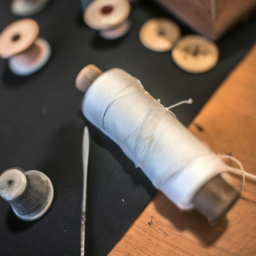
History of Kantha Stitch

Kantha stitch refers to a traditional form of embroidery originating from West Bengal, Bangladesh, and the Odisha region of India. It holds a significant place in South Asian art and textile history. The word “kantha” translates to “rags” in Sanskrit, which perfectly summarizes the essence of this technique.
Kantha stitch is primarily practiced by rural women, and its origins can be traced back thousands of years. Historically, this technique was used as a thrifty way to recycle old garments, creating something new and beautiful out of worn-out textiles.
The craft of Kantha stitch often involves layering multiple pieces of old fabric and delicately stitching them together with colorful threads. These threads form intricate patterns, depicting various themes such as animals, birds, flowers, and religious motifs. The motifs vary depending on the region and the purpose of the piece.
Kantha quilts, also known as “nakshi kantha,” are one of the most popular forms of this embroidery. These quilts consist of multiple layers of fabric stitched together using the running stitch. Traditionally, the base fabric is made from discarded saris or dhotis.

Initially, kantha stitching was primarily done for practical reasons such as making warm blankets or covers for household items. However, over time, it evolved into a form of artistic expression. Kantha embroidery is now appreciated for its aesthetic appeal and intricate designs.
Today, kantha stitch has transcended its humble origins and has gained recognition as an exquisite art form worldwide. It is not only a part of traditional fashion but has also made its way into contemporary clothing, home decor, and accessories.
The intricate detailing, vibrant colors, and the stories woven into each stitch make kantha embroidery truly unique. It holds cultural and historical significance, reflecting the rich heritage of the regions where it originated.
Preserving this ancient craft is crucial in keeping the legacy alive. By supporting and promoting kantha stitch, we ensure that this cultural treasure continues to thrive, passing down its beauty and significance to future generations.




